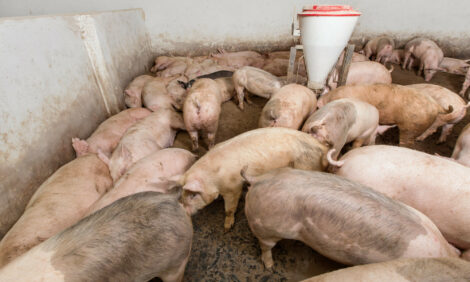



Pork Central Hog Market Thoughts for October 2005
By Allen Prosch, Pork Central Coordinator, University of Nebraska - Hog markets responded well to the Hogs and Pigs Report. While the report was as predicted, the lean hog futures contracts moved higher in response to indications of little or no expansion in the breeding herd.
There was much expectation that there would be some expansion after nearly two years of profit in the production sector. The December contract is now following the typical seasonal pattern. (See the September 1, newsletter) If it continues to do so, the current downtrend would be to the mid-fifties by the end of October or first of November. A normal recovery in November and December would be back to the low sixties. Of course, no year is typical and the long term trend shown in the September newsletter recovers less than the short term (5 year) series. The next three to six weeks may not be the best time to price ahead, based on these trends.

Profitability remains very good. For a $40 breakeven producer, the opportunity is available for $20 per hog profits, on average, through Oct 2006. For many producers that will be 34 to 36 months of profit. Looking ahead to fall and early winter hog supplies may be slightly larger than previous reports had indicated. Recent weekly kill has been slightly higher than expectations based on the June Hogs and Pigs Report. But, with very strong exports and good movement through the retail level, supplies may not be much of a problem. Recent news of problems at the new Triumph food plant in St Joe should not have an impact unless it delays the opening considerably longer than indicated. The near future, late November to early December, may see packer processors needing to replace market hogs currently being received from Triumphs cooperative members, if the plant opens as planned. This would be positive for early winter prices.
Most producers should be able to maintain profits through next summer or early fall. The key to doing so is feed costs. With corn and soybean meal prices at very low levels there will be some increase in use. The lower prices will encourage higher usage and have more impact through summer. New usage from ethanol plants that may come on line will be an important part of feed pricing within the year. As of Oct 10, 2005 University of Illinois’1 Darrell Good reported ending corn stocks for the 2005 marketing year at 2.29 billion bushels. Nebraska average price for reporting points across the state was $1.53, with a range from $1.41 to $1.66.

Soybean meal prices on the Chicago Board of Trade average $185 per ton for the next 15 months. Without a doubt there are opportunities to price feed. Producers who will need to buy grain may want to take advantage of current prices. Compared to the previous five year average, current prices aren’t on the chart shown here. Buyers will want to have some needs priced before the traditional spring price increases.
Source: University of Nebraska's Pork Central - October 2005








